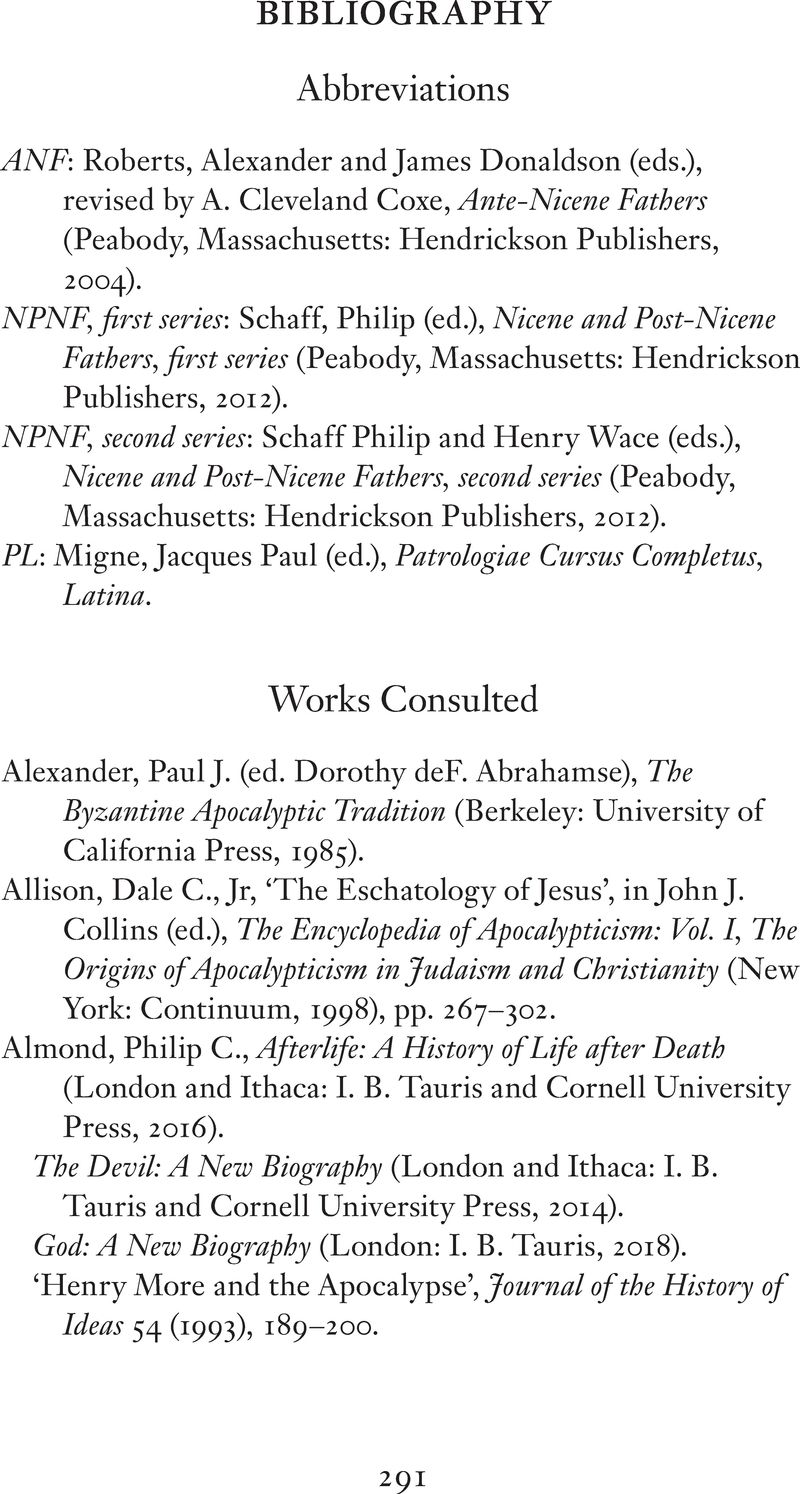Book contents
- The Antichrist
- Reviews
- The Antichrist
- Copyright page
- Dedication
- Contents
- Plates
- Acknowledgements
- Prologue
- 1 The Origins of the Antichrist Tradition
- 2 The Story Begins
- 3 The Antichrist, East and West
- 4 Antichrists, Present and Future
- 5 Of Prophets, Priests, and Kings
- 6 The Antichrist Divided
- 7 Antichrists – Papal, Philosophical, Imperial
- Epilogue A Brief Meditation on History
- Bibliography
- Index
- References
Bibliography
Published online by Cambridge University Press: 18 September 2020
- The Antichrist
- Reviews
- The Antichrist
- Copyright page
- Dedication
- Contents
- Plates
- Acknowledgements
- Prologue
- 1 The Origins of the Antichrist Tradition
- 2 The Story Begins
- 3 The Antichrist, East and West
- 4 Antichrists, Present and Future
- 5 Of Prophets, Priests, and Kings
- 6 The Antichrist Divided
- 7 Antichrists – Papal, Philosophical, Imperial
- Epilogue A Brief Meditation on History
- Bibliography
- Index
- References
Summary

- Type
- Chapter
- Information
- The AntichristA New Biography, pp. 291 - 308Publisher: Cambridge University PressPrint publication year: 2020



